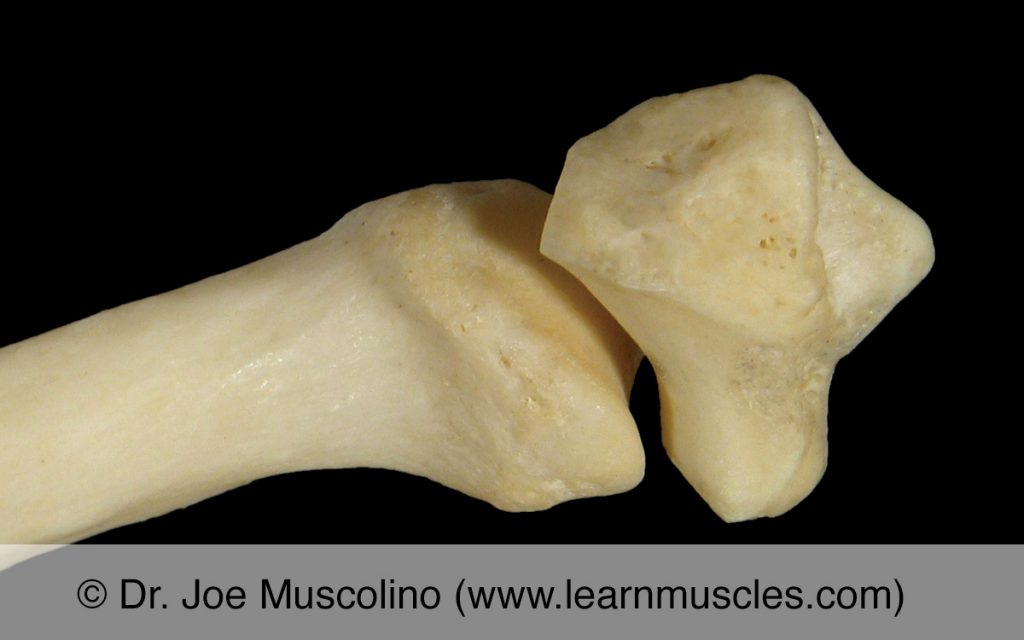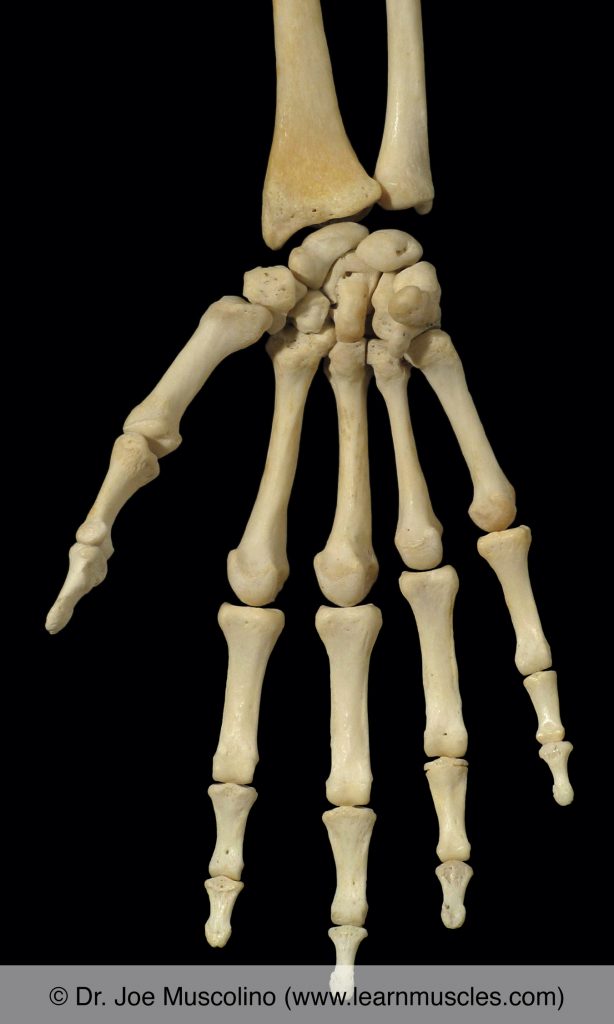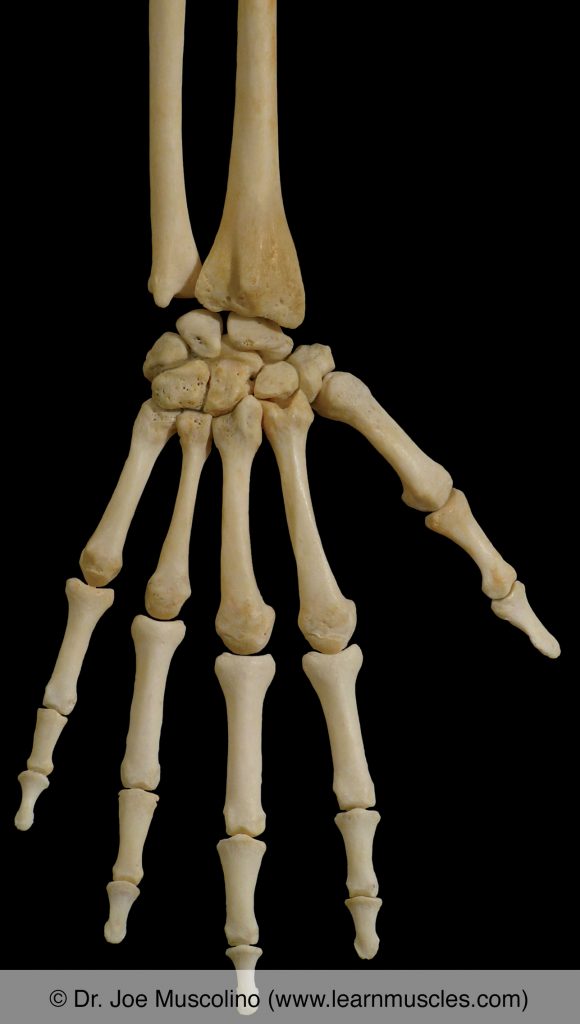- The saddle joint of the thumb is a synovial, biaxial, saddle joint.
- It is formed by the trapezium meeting the first metacarpal.
- the trapezium is a carpal bone and the first metacarpal is the metacarpal of the thumb.
- The saddle joint of the thumb could also be described as the first carpometacarpal joint.
- The saddle joint of the thumb is biaxial, but allows motion in all three cardinal planes. Its motion is opposition and reposition of the thumb in an oblique plane that combines the following motions.
- abduction/adduction in the sagittal plane.
- flexion/extension coupled with medial/lateral rotation in an oblique plane.
NOTES:
- The fact that the saddle joint of the thumb is biaxial but allows motion in all three cardinal planes can seem confusing at first. It is because flexion and medial rotation (or extension and lateral rotation) must occur together in an oblique plane. Abduction/adduction can be isolated in a cardinal plane. So the saddle joint is biaxial because it allows motion within two planes: one oblique plane (that involves two cardinal planes) and one cardinal plane, therefore all three cardinal planes.
- The term opposition is defined as the pad of the thumb meeting the pad of any other finger of that hand. It involves abduction in the sagittal plane along with flexion in the frontal plane coupled with medial rotation in the transverse plane.
- Reposition is bringing the thumb back from a position of opposition to anatomic position. It involves the opposite motions of opposition, namely adduction in the sagittal plane along with extension in the frontal plane coupled with lateral rotation in the transverse plane.
- Opposition of the thumb is what allows us to hold objects, and therefore manipulate the world. Many anthropologists believe that it was the evolutionary development of thumb opposition that drove the development of the human brain.
- The term saddle joint is a generic term that describes a certain shape of the opposing articular surfaces. There are other saddle joints in the human body, but the saddle joint of the thumb is the famous saddle joint and is therefore often described simply as the saddle joint.
- Abduction/adduction of the thumb occur within the sagittal plane and flexion/extension of the thumb occur within the frontal plane because the thumb rotated approximately 90 degrees evolutionarily. You can see this in anatomic position: the pad of fingers #2-5 face anteriorly, but the pad of the thumb faces medially.

The saddle joint of the thumb on the right side of the body.

Anterior view of the saddle joint of the thumb on the right side of the body (as well as other joints of the wrist and hand).

Posterior view of the saddle joint of the thumb on the right side of the body (as well as other joints of the wrist and hand).
